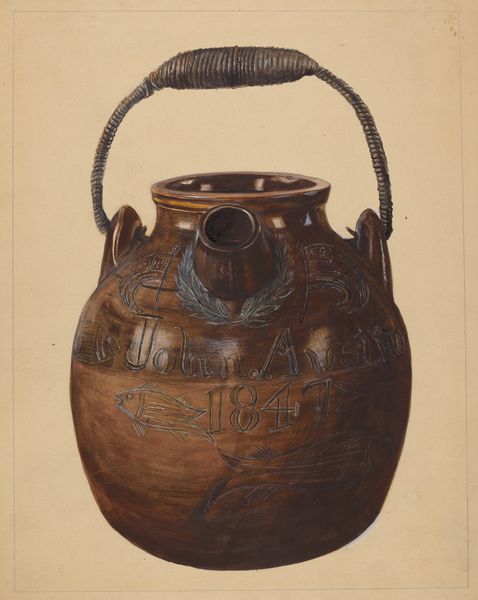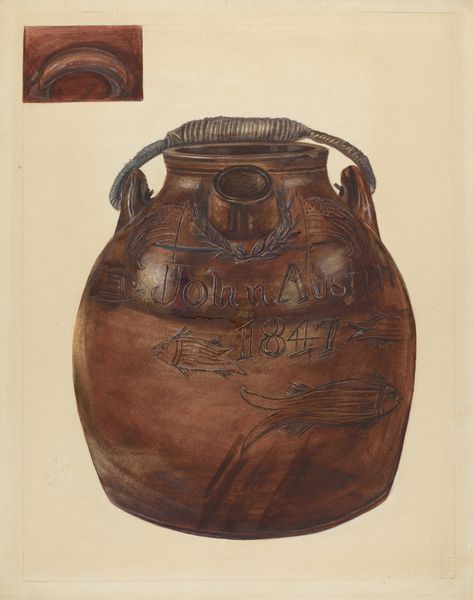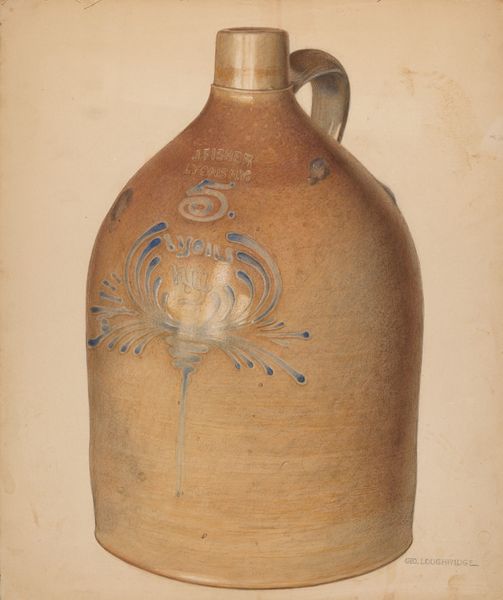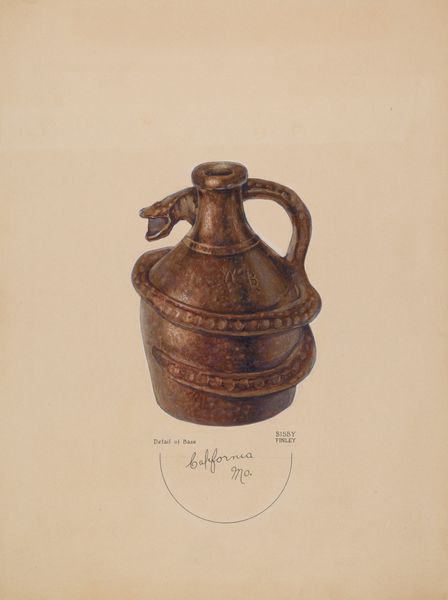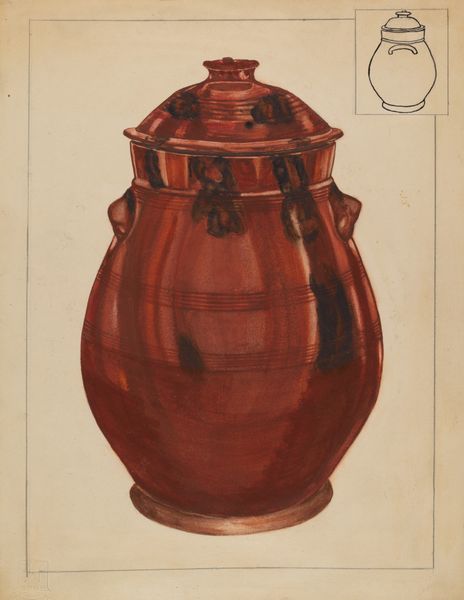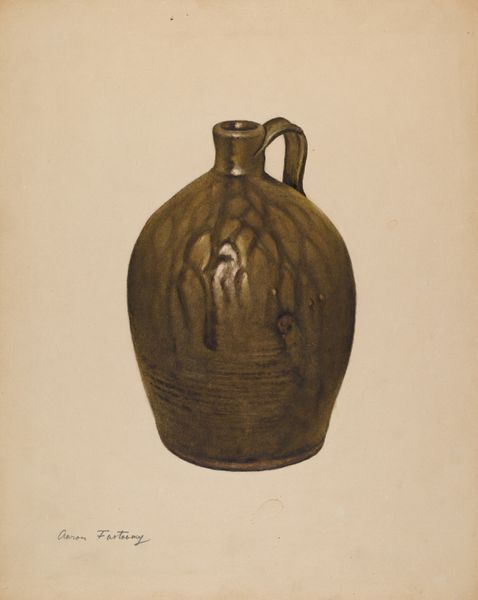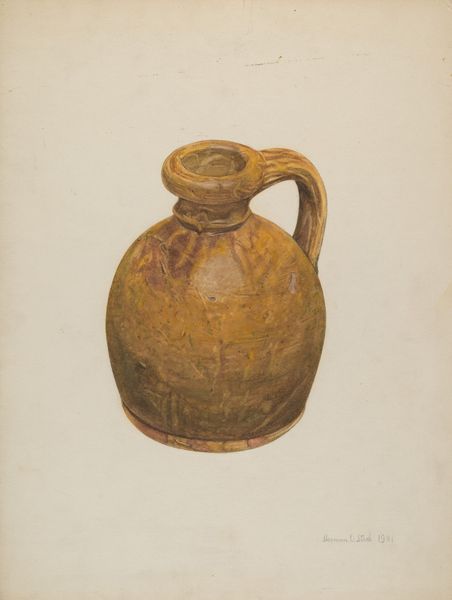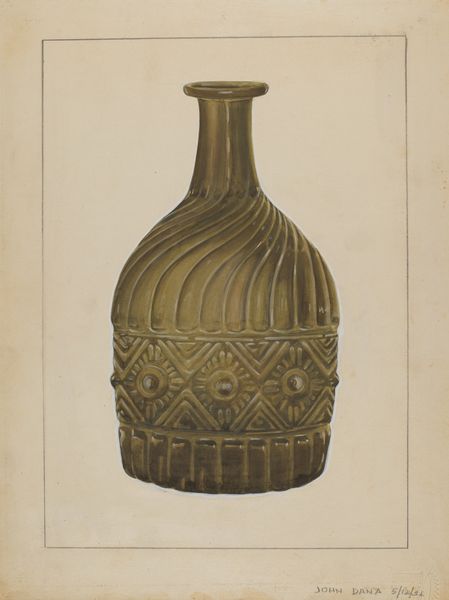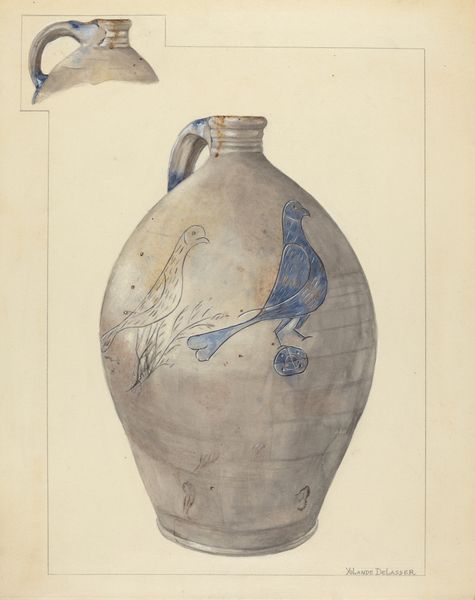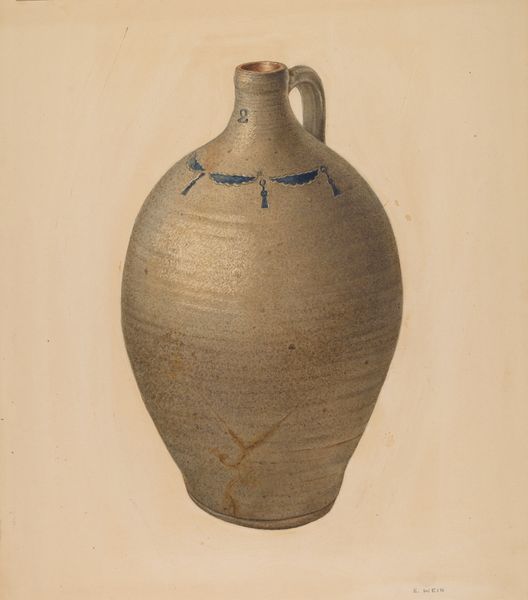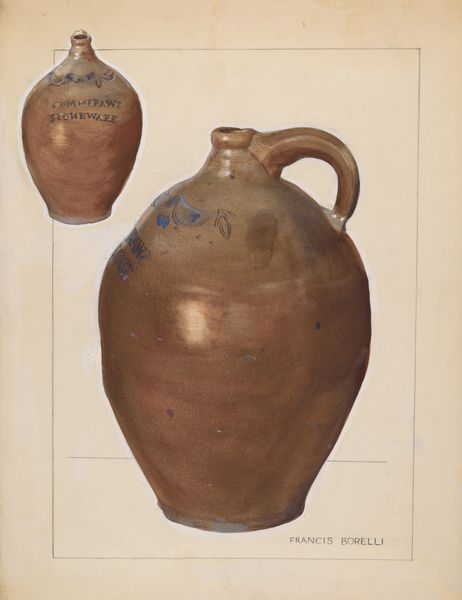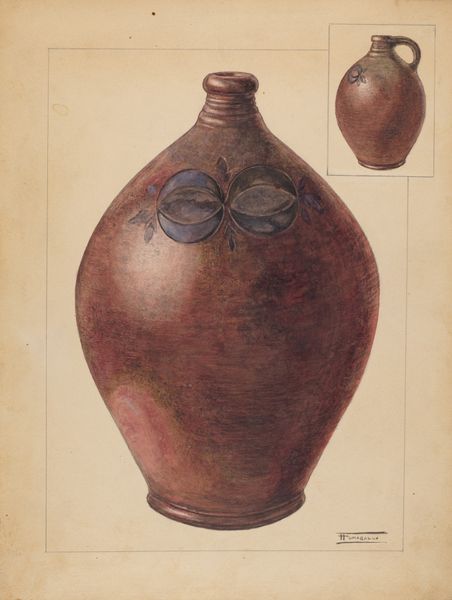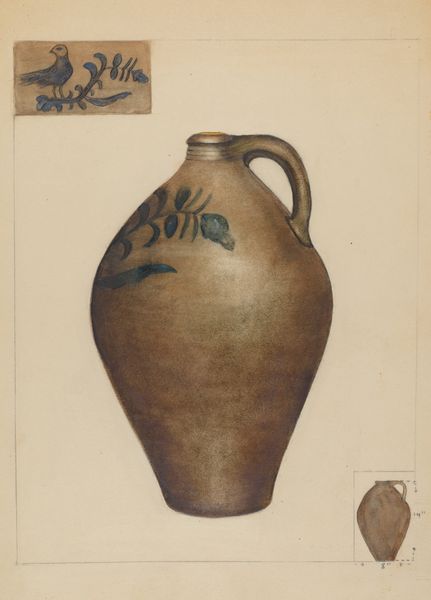
drawing, watercolor, earthenware
#
drawing
#
oil painting
#
watercolor
#
earthenware
#
folk-art
#
watercolour illustration
#
watercolor
Dimensions: overall: 28.8 x 22.8 cm (11 5/16 x 9 in.) Original IAD Object: 9" High 4 1/2" Diameter (top) 7" Diameter (base)
Copyright: National Gallery of Art: CC0 1.0
Editor: So, this is Yolande Delasser's "Jug for Batter," created around 1936, using earthenware and watercolor. It’s simple but striking. What strikes me most are the naive fish swimming across the brown jug, seemingly suspended in time. How do you interpret this work? Curator: I see this piece as a powerful commentary on labor and domesticity during the Great Depression. Delasser, in depicting this everyday object—a batter jug— elevates the often-unseen work of women in the home. The folk-art style nods to a cultural heritage rooted in resourcefulness and resilience in the face of economic hardship. Editor: Resourcefulness? I hadn’t thought about it that way. So the decoration of the jug itself with the fish wasn’t merely aesthetic? Curator: Precisely. Consider the materials: earthenware, humble and readily available. The fishes may also signify sustenance and survival, fundamental concerns of the working class at the time. How does the fact that this jug, and others of similar design, often belonged to specific families reframe its purpose? Editor: It sounds like the jug isn’t just a container, but a symbol of working-class identity, something grounding and representative of this group. Curator: Exactly. And through the artwork, Delasser asks us to consider whose stories are valued, whose labor is recognized. Is it art that speaks directly about social equity? Editor: That's a good point! It makes me appreciate folk art so much more and reconsider the context it emerged from. Thank you! Curator: My pleasure! It's important to keep challenging what we think we already know.
Comments
No comments
Be the first to comment and join the conversation on the ultimate creative platform.
